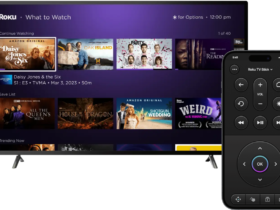Selecting the right LCD (Liquid Crystal Display) screen involves understanding various factors, including display technology, panel types, resolution, and intended applications. Whether for upgrading a monitor, selecting a new smartphone, or integrating displays into industrial equipment, making informed decisions about LCD screens ensures optimal performance, visual clarity, and user satisfaction. This comprehensive guide explores essential considerations, factors influencing LCD screen quality, and tips for choosing the best display solution for specific needs.
Understanding Key Factors in LCD Display Screens
LCD technology encompasses TN, IPS, and VA panels, each offering unique benefits such as fast response times, superior color accuracy, and high contrast ratios. Understanding panel types helps determine suitability for gaming, professional use, or multimedia consumption.
Resolution and Pixel Density
Resolution defines the number of pixels displayed on-screen, impacting image sharpness and detail. Higher resolutions, such as Full HD (1920×1080) or 4K Ultra HD (3840×2160), offer enhanced clarity and visual fidelity, beneficial for tasks requiring precise image reproduction.
Refresh Rates and Response Times
Refresh rates indicate how many times per second the display refreshes the image, while response times measure how quickly pixels change colors. Higher refresh rates and faster response times contribute to smoother motion in gaming and multimedia applications, reducing motion blur and ghosting effects.
Choosing LCD Screens for Specific Applications
Gamers benefit from high refresh rates, low response times, and adaptive sync technologies (e.g., FreeSync, G-Sync) to eliminate screen tearing and stuttering during gameplay. IPS panels with wide viewing angles and accurate color reproduction enhance visual immersion in multimedia content.
Professional Design and Content Creation
Graphic designers, photographers, and content creators require accurate color representation and wide color gamuts offered by IPS or OLED displays. High-resolution screens with HDR (High Dynamic Range) support deliver lifelike images and precise color grading capabilities.
Business and Productivity
Business users prioritize screen size, ergonomic features, and connectivity options for multitasking and productivity. Consideration of screen size, resolution, and adjustable stands enhances comfort and productivity in office environments.
Tips for Buying and Maintaining LCD Screens
Research product specifications, read reviews, and compare features across different LCD models to determine compatibility with specific devices and intended usage scenarios.
Warranty Coverage and Support
Choose LCD screens from reputable brands offering warranty coverage and reliable customer support. Warranty protection against defects ensures peace of mind and support for repairs or replacements as needed.
Ergonomics and User Comfort
Consider ergonomic features such as height-adjustable stands, tilt capabilities, and VESA mounting options for customizing viewing angles and enhancing user comfort during prolonged use.
Conclusion
Selecting the right LCD display screen involves evaluating various factors, including display technology, resolution, refresh rates, and intended applications. Whether for gaming, professional content creation, or business productivity, understanding these considerations ensures optimal visual performance, clarity, and user satisfaction. By researching product specifications, comparing features, and prioritizing ergonomic design and warranty coverage, users can make informed decisions when choosing LCD screens for personal, professional, or industrial applications. Invest in quality LCD display screens that meet specific requirements and enhance visual experiences across diverse usage scenarios, ensuring long-term satisfaction and usability in today’s digital landscape.













